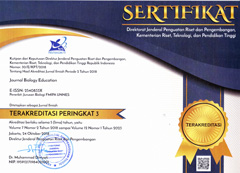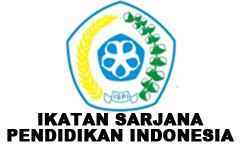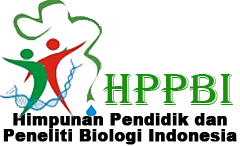The Development of Earth Layer Material Booklet Based on Science Literacy for Junior High School Students
Abstract
Science literacy skills are needed by students in the face of the challenges of the XXI century. Based on data from PISA study results, students' science literacy skills in Indonesia in 2015-2018 did not increase significantly. In 2018, Indonesian students' science literacy was ranked 36th out of 40 participating countries with a score of 396. The score is still well below the PISA International average score of 489. Teaching materials are one of the factors that can affect the level of science literacy skills of students. Existing teaching materials do not meet the balanced comparison of science literacy category content. Therefore, a textbook in the form of a science literacy-based textbook is compiled that has a balanced comparison of science literacy category content. The purpose of this study is to know the characteristics, validity and estimation of the practicality of the teaching materials developed. The research method used is R&D with ADDIE model. But in this study, only four stages were conducted, namely Analysis, Design, Development, and Evaluation. Implementation stage is not done because during the Covid-19 pandemic, students do WFH learning so that researchers can not implement Booklet Layer Earth in the learning process in the classroom. The booklet developed meets the comparison of science literacy category content in teaching materials, namely 47.06% : 17.65% : 17.65% : 17.65%. Validity test results showed that science literacy-based booklets were eligible to be used as teaching materials with media expert percentages of 85.00% and 99.00% and material experts of 86.90% and 95.00%. Teachers' responses to the materials developed obtained the Excellent criteria with percentages of 91.25% and 90.00%. Students also gave positive responses to teaching materials with Excellent criteria and obtained an average percentage of 84.96%.
The copyright of the article once it is accepted for publication shall be assigned to the journal as the publisher. The intended copyright includes the right to publish the article in various forms (including reprints). The journal maintains the publishing rights to the published articles.
This work is licensed under a Creative Commons Attribution 4.0 International License.







